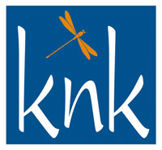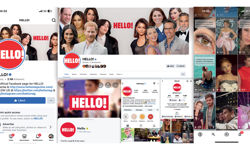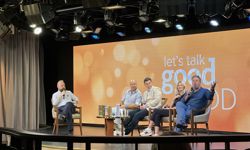
Having edited Eye for twenty years, John Walters is obsessive about graphic design – and the magazine he has co-owned with Simon Esterson for more than a decade. During our interview, it is clear that this fervid determination, across all aspects of the title, ensures Eye is not only sustainable but loved by its readers.
The former musician, who was one of the founders of the 70s band Landscape and then a record producer, was a late starter in journalism. Although his career path might seem odd, writing has never been far from his agenda. He tells me that he became a musician to write music.
John confesses that he always enjoyed having control as a composer or producer – organising many talented people.
Being a magazine editor is not so different, he explains. “You are in charge but are also collaborating with a lot of people with different skills from you. Whether it is in a studio or an office, you are working with interesting people from different backgrounds and generations. So, in that respect, making a record and creating a magazine have a lot in common.”

It wasn’t until the 90s during the early stages of the digital revolution that he became involved with magazines. “Working in a newspaper and magazine office was new to me. I had never worked in an office until that time,” he reveals, adding that this was around the time that the first Macs replaced PCs which had previously taken over from typewriters.
It was the digitalisation of publishing, as well as having worked for Emap as a production consultant, that helped John make the transition. “Having worked closely with editors and designers who had loads of experience, I learned an awful lot from them while teaching them how to cope with the shortcuts in Quark and the shortcomings of Word.”
Aside from all the doom and gloom surrounding printed editions, John feels that technology has made it a great era for print magazines. “We have more control over the design of magazines. Even looking at beautiful magazines from a generation ago, we can now do much more inspiring things in terms of type, image and the accuracy of colours.
“More importantly, there isn’t that massive entry barrier into the magazine world; so many young editors and art directors are developing indie mags. These days, this can be achieved without spending a lot of money and having to hire a large team of experienced people. A small team can create a decent-looking magazine.”
Shaping Eye
Highly-respected in the publishing and design industry for its high-quality editorial and engaging reviews, Eye has a wide diversity of writers. John’s editorial philosophy is to “present some of the most inspiring, exciting and informative articles about design and visual culture for a professional readership of graphic designers”.
He reveals that one of Eye’s unwritten policies is that each issue should feature four of five new writers who’ve never written for the magazine before.
“In a recent issue, we had 14 new writers. We bring in people who are specialists. They may not be prolific writers, but they know their subject. Alternatively, these might be young, emerging writers who you want to give a chance to, or someone who doesn’t consider themselves a writer but has something to say.
“Many people in the design world are articulate, even if they are not experienced writers – helping them is part of what we do. Or we commission someone who is an expert with a fantastic collection of graphic design that we can bring to life through the pages of our magazine.”
Asked who had the most impact on his work, John credits his wife and fellow journalist Clare Walters, who taught him how to sub-edit. “I learned from her what sub-editing meant – understanding the editorial process, the pre-subbing, the whole food chain of journalism.”
John also cites co-owner Simon Esterson as having a significant influence on his work. “He is simply one of the best editorial art directors in the world and is universally acknowledged with his portfolio including The Sunday Times, The Guardian, Domus, Museums Journal and History Today.
“He puts a lot of creativity and common sense into the art direction of Eye magazine, that you can’t help but learn from,” explains John.
“Everyone who works on the magazine learns an enormous amount from seeing Simon in action.”
We can now do much more inspiring things in terms of type, image and the accuracy of colours.
Quality production
When John and Simon took over ownership in 2008 from Haymarket, their initial focus was to improve the production quality and ensure the magazine had an independent feel.
“Being part of a publishing house alongside other titles with different priorities, there is a danger of being caught up with those. These might include reducing the print quality to save money, changing the distribution methods or using marketing methods that are unsuitable for your audience. All those can happen with a centralised company.”
Secondly, they enhanced their subscribers’ experience by improving the quality of the magazine’s packaging, seeing it as an investment in retention. As John points out, it is an international title, going to more than 80 countries worldwide.
“As publishers, we have to be able to stand the shipping, freight and distribution costs to subscribers wherever they are – be it Manhattan or Tasmania.”
Such a move could be considered financially risky, but John felt it was a way of giving a vote of confidence in the value of a printed magazine and putting the readers first. With the focus on quality, they signed with an ecologically conscious printer with state-of-the-art facilities.
“Being in charge of the magazine’s finances meant we could change our spending patterns, so we invested a lot more in repro, in pre-press. People pay a high price for each issue (currently £17). Because the cover price hasn’t changed for many years, it seems a little cheaper, but it is still a hefty sum, and we feel that readers deserve a very high-quality product.”
High advertising sales
For some publishers, achieving sufficient advertising sales is a struggle. However, Eye has just recorded its highest-ever advertising sales figures. John attributes this achievement to a healthy rate card and loyal advertisers, the majority of whom are type foundries.
“Our type-special editions attract more type foundry advertisers than other issues.” According to John, these advertisers also support their non-type specific issues.
“I am grateful for such loyalty. Our advertising space is accessible. Offering online banners, which are good value and cheap, enables smaller emerging type foundries to gain visibility and develop a relationship with the magazine. Eye can do this because online advertising isn’t part of our main business.”
The title’s high advertising revenue can be credited to a synergy between its advertisers and audience. Although John also feels that this is partly due to what he deems “the golden age of type” – a growth in the design industry.
“There is a fantastic diversity of type, both for body text and display. The new typefaces tend to be well-engineered and support a huge variety of languages. As design becomes more global, the typefaces are there to support global brands and agencies.”
Many people in the design world are articulate, even if they are not experienced writers – helping them is part of what we do.
Critical challenges
Eye’s biggest threat was going independent, the trials of keeping afloat and managing cashflow while dealing with setting up a new business as an independent. He admits that the first 18 months were the most challenging.
“Somehow, we survived and were able to make the title demonstrably better for our readers in terms of production and content.”
Like most titles, there is the ongoing challenge of engaging new readers.
“Thankfully they keep coming,” says John, despite the competition for “eyeballs” from bloggers and social media. “We took a strategic decision to take Twitter and Instagram more seriously than the other platforms, which seems to have paid off.”
He uses social media to promote the magazine. “Our social media strategy is to demonstrate that Eye is a great title. The message is that although you can read lots of its content online, you need to take out a subscription to enjoy its physical form.”
The team also uses Vimeo, making short videos called Eye Before You Buy. The videos show the hands of assistant editor, Sarah Snaith flicking through the magazine to demonstrate the wealth of great articles, reviews, opinion pieces and ads.
Subscription sales remain healthy, as are retention rates. Currently, a third of Eye’s circulation is from subscription sales, which John partly attributes to their successful promotions.
“Earlier in the year, an Eye subscription included a free DVD, titled Graphic Means, documenting the history of design production between the 1960s and 80s. A few younger members of our team were doubtful that a DVD was a good thing to offer people. But it was fantastically successful,” reveals John, adding he had received feedback from readers saying how pleased they were to get a DVD through the post.
“We got lots of new subscribers through that. One of the great aspects of using Instagram was seeing people sharing lovely stories having just received their DVD through the post with their subscription to Eye. It’s an interesting part of the social media culture where people like to demonstrate their enthusiasm – and I love it.”
Essential lessons
Why is Eye so successful? From my perspective, there are three core reasons.
First, it is their reader-centric and pro-active approach, along with a continual desire to evolve in terms of editorial and production quality.
Secondly, they understand how to use online and social media content to widen audience participation. And lastly, by creating collectable issues, Eye provides a relevant and ongoing service for its audience and advertisers by enabling the latter to reach readers directly.
These three are essential lessons, particularly for specialist publishers.
Eye’s latest subscription offer features Typography: A Very Short Introduction, published by Oxford University Press.
We took a strategic decision to take Twitter and Instagram more seriously than the other platforms.
This article was first published in InPublishing magazine. If you would like to be added to the free mailing list, please register here.












